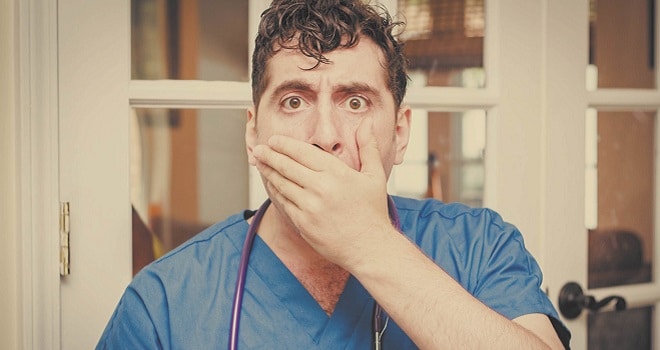5 concerning mistakes London hospitals keep making

As specialists whose legal expertise is called upon when medical professionals have been negligent in their care, we see and hear about our fair share of Never Events. So to keep you informed we’ve picked out 5 particularly concerning examples that could be happening on your doorstep.
Wrong site surgery
Alarmingly, this is one of the more common types of Never Event and involves an operation being carried out on the incorrect part of the body. You may think it would be straightforward enough to ensure where to make an incision or what to remove, but it would seem that notes get misplaced or misinterpreted. When looking at NHS figures, these incidents happen far too frequently.
Examples of wrong site surgery range from relatively minor incidents (such as the wrong toe being treated) through to the wrong eye being operated on or the wrong testicle being removed. There are even cases of patients being mixed up and the procedure being carried out on the wrong person!
Foreign objects being left inside patients
This is another example of a Never Event that occurs too frequently. It sounds like a simple mistake and in many respects it is; but this really does cause serious injury. Most cases of this nature involve swabs and stitches being left inside a patient after an operation, but occasionally the list mentions more intrusive pieces of hardware like surgical tools and screws from implants or prosthetics.
In some cases, leaving an object inside a patient can cause discomfort and a delayed recovery. However in more serious situations it can result in infection and a genuine risk to life. In circumstances like these, an operation that could have been a relatively common and routine procedure can result in long lasting physical complications, not to mention inflicting psychological damage and a loss of income.
Wrong implants
Wrong implants refer to surgical procedures in which the wrong item is placed inside a patient by accident. Mistakes range from a similar but incorrect implant (which is not fit for purpose) to a completely inappropriate implant or prosthesis being used.
Falls from windows
Hospitals care for a whole manner of people, from the physically infirm to the mentally ill. So when it comes to people at risk of self-harming, there are a number of common sense procedures that absolutely have to be adhered to.
There are examples of patients falling from windows (intentionally or otherwise). These occurrences often take place when broken restrictors have not been replaced, windows are left unsecured, or simply a key is left in situ and is used by the patient. It follows that these Never Events can be avoided by taking measures to ensure that a securely fitted restrictor has been installed, and only hospital staff can open the windows.
Chest or neck stuck in bedrails
This seems a little bizarre, and common sense dictates that responsibility should lie as much or more with the patient as it does with the hospital trust. However, as all bed rails and railings have to be a specific size precisely to avoid this from happening, the NHS labels these occurrences as Never Events. For whatever reason, this must happen a little too often.
At the RWK Goodman we understand how receiving sub-standard care as a result of hospital negligence can have a life limiting or life impairing impact. As medical negligence lawyers, we hope that when people receive any type of negligent medical care they understand that they have the right to ask why, and if necessary to hold those responsible to account. If you believe that you or someone you know has received poor care then get in touch today and discuss your options with us for free.